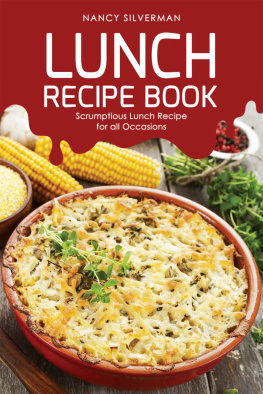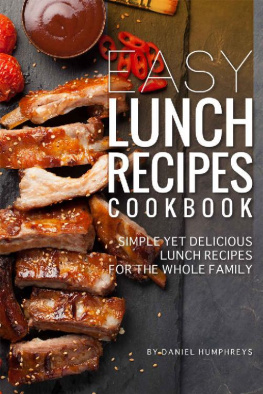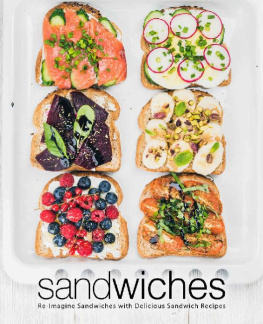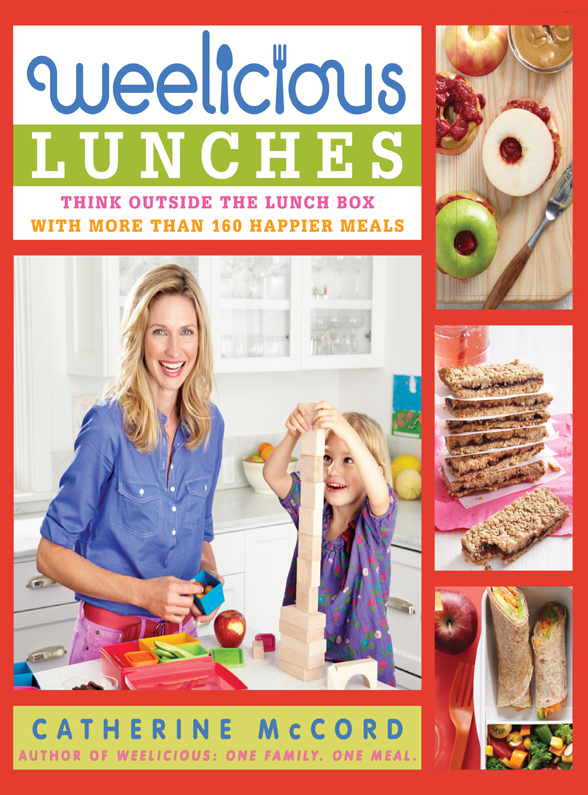To all the lunch ladies from my childhood,
thank you for always allowing me to hang out and
watch you. You were among my
greatest teachers.

contents

thinking outside
the lunch box
I used to wake up in sheer panic every morning thinking about what to make for lunch.
In time I learned a few things.
Its not always about recipes.
Its about using what you already have in your refrigerator and pantry.
And being creative.
Its cooking outside the box.
Or as I like to say, cooking outside the lunch box.
I remember my son Kenyas first day of preschool as if it were yesterday. I was so excited by (and nervous about) the prospect of watching my little baby enter a completely new environment where every day, among other things, hed be seated at a long table with other little kids, all (hopefully) eating food packed with care by their parents. Then it hit mewhat exactly should I pack for him? Those same old nerves I had from his infancywondering what baby food purees I should offer him and nervously anticipating his reaction to every new flavor and texturewere coming back to roost. Figuring out how to continue to inspire him to be a great eater during school lunchthe one meal where I wouldnt be there to accompany, model, and encourage himwas feeling like a daunting new challenge.
Was I unwittingly setting up my son to be that kid who trades his entire lunch for a single prepackaged cookie? Would he eat his dessert before even trying the more nutritious food I had so lovingly prepared? Was it realistic to believe I could offer him something different every day and not get stuck in the PB&J rut, so that hed stay excited about food?
At the same time I was wrestling with all of these questions, I had a newborn at home in addition to my extremely active two-and-a-half-year-old. I was also working full time. Its not as if I had hours in my day to strategize about how to make the perfect lunch. Whatever I was going to send him to school with every day needed to be fast and easy enough for me to make while contending with two screaming kids in the kitchen. I also wanted what I made to be interesting enough that my son would want to sit and eat it of his own volition and not get distracted by what his classmates were eating or the desire to go out and play.
In those first few weeks of Kenyas preschool, I got to stay with him as he ate and watch as all of the other kids opened their lunch boxes. What I saw almost made my eyes pop out of my head. Why was there so much white food? White bread, white cheese puffs, peeled apples? Are we parents so afraid that our kids wont eat the food we make that we either just toss in junk or remove nutrients because its easier? Some of the most interesting things I heard in those first few days of school were from my sons teachers, who were equally frustrated. This was apparently a common sight for them, and they told me it was difficult for them to watch every day as these tiny kids sat eating empty-calorie food, insufficient to keep their bodies and minds working at their full potential.
And then there were the containers. Kids spent so much time struggling to open (and often losing) all their different containers and plastic bags that they really only ate one or two of the foods their parents had packed them. With less than fifteen minutes scheduled for lunch at some schools, kids often never find or make it to the fruit or vegetable at the bottom of the paper sackassuming there was one there to begin with.
I spent the next few years on a lunch mission. I tried to figure out what makes the perfect lunch and how to make sure that a kids lunch box comes home empty every day. It took me some time but I finally developed an abundance of recipes, strategies, tips, and ideas to master the midday meal. I hope that in the following pages youll find a bit of inspiration to get out of the day-in, day-out lunchtime blues!

Im guessing that if you bought this book youre probably just hoping for a few new simple school lunch ideas and reliable recipes that your kids will love. If so, youre in luck. Thats the main reason I wrote it.
However, my other reason for writing this book was born of necessity. Ive found that lunch can cause us parents all sorts of anxiety, since its usually the one meal of the day we moms and dads arent present for, and even if were lucky enough to have packed our little ones off to school well, we know (or fear) that once we arent around, theyre subject to all sorts of outside influences, both real and imagined. While weve all heard a horror story about the kid with a Big Mac in his lunch sack or watched with disbelief as Congress passed a bill that equates the nutritional value of pizza sauce with that of a serving of vegetables, more often than not we moms and dads are competing with basic lunch box envy, a fear that when the lunch bell rings and the lids are raised on our childs lunch box and those of her friends, everything will be more appealing to our little one than the food we sent with her.
The blow of your kid telling you that Maxs mom packs the best lunches can be hard enough on a parents ego, but even if youre evolved enough emotionally to get beyond that kind of rejection (Im definitely not, but maybe you are), deciding what should go into your childs lunch box can be daunting simply on a pure I just dont want my kid eating crap levelespecially if youre already working your darnedest to set good examples for him. Its easy to feel as if youre fighting an unwinnable battle when your kids peers bring to school things like Pepperidge Farm Goldfish, Jell-O, and, worst of all in my opinion, Snackables, but I urge you to let go of those fears. If you get caught up in that type of thinking, youre bound to make yourself crazy. All you can do is focus on sending your kids to school with the best lunches youre capable of













